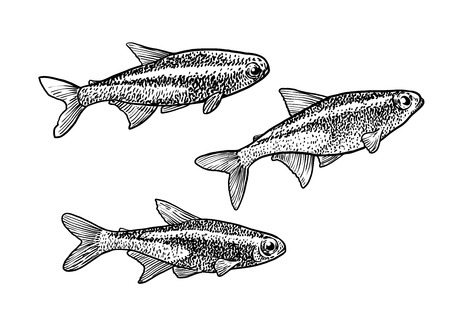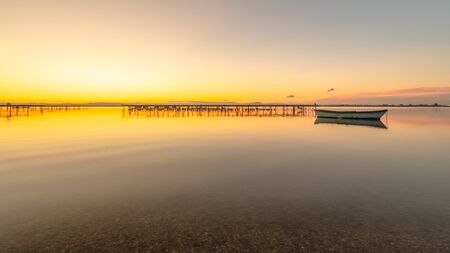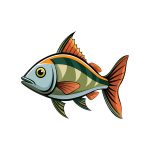1. Understanding How Weather Affects Fish Behavior
When it comes to fishing, understanding how weather affects fish behavior can make all the difference between a slow day on the water and a full cooler. Fish are cold-blooded creatures, which means their activity levels and feeding habits are closely tied to environmental conditions. By keeping an eye on the forecast and knowing what to look for, you can time your trips for when fish are most likely to bite.
Temperature
Water temperature plays a huge role in determining where fish will be and how active theyll be. Each species has its own preferred temperature range, and if the water is too hot or too cold, they’ll move to find more comfortable conditions—or stop feeding altogether.
| Fish Species | Preferred Water Temperature (°F) |
|---|---|
| Largemouth Bass | 65–75°F |
| Trout | 50–60°F |
| Walleye | 55–70°F |
| Catfish | 70–85°F |
If youre fishing during a cold front or heatwave, try targeting deeper waters where temperatures are more stable.
Barometric Pressure
Changes in barometric pressure—basically the weight of the air above us—can influence fish behavior in surprising ways. Fish can feel these changes through their swim bladders, which helps them stay buoyant.
| Barometric Condition | Fish Behavior | Fishing Tip |
|---|---|---|
| Falling Pressure (before a storm) | Increased activity and feeding | Great time to fish; use aggressive lures or live bait |
| Low Pressure (stormy weather) | Lethargic and less active | Slow down presentation and target cover or deeper areas |
| Rising Pressure (after a storm) | Slightly sluggish but recovering | Use finesse techniques until activity picks up again |
| Stable High Pressure (clear skies) | Consistent behavior, but may be cautious feeders | Fish early morning or late evening with natural baits |
Wind Direction and Speed
A little wind can actually improve your odds. Wind stirs up the surface, making baitfish more active—and where baitfish go, predators follow. Plus, wind-blown banks often concentrate food sources.
Quick Wind Tips:
- Light Winds: Good for topwater action and clear presentations.
- Moderate Winds: Target wind-blown shorelines for feeding fish.
- Strong Winds: Can make boat control tough—stay safe and consider fishing sheltered areas.
Sunlight and Cloud Cover
The amount of sunlight affects how deep light penetrates the water, influencing where fish hang out. Bright sunny days often push fish deeper or into shaded cover, while overcast days can encourage them to roam and feed more freely.
- Sunny Days: Fish tight to structure like logs, docks, or deep weed edges.
- Cloudy Days: Expect more active fish across wider areas—great time for moving baits like crankbaits or spinnerbaits.
The key takeaway? Pay attention to the weather before you head out. Matching your tactics to current conditions gives you a serious edge—and makes your time on the water a lot more productive.
2. Reading Forecasts Like a Pro
Before you grab your rod and hit the water, taking a few minutes to check the weather can make all the difference between a great catch and going home empty-handed. Understanding how to read weather forecasts like a pro isn’t just about knowing if it’ll rain—it’s about predicting fish behavior based on changing conditions.
Using Weather Apps and Radar
There are tons of free and paid weather apps out there, but some of the best for anglers include Weather Underground, Windy, AccuWeather, and NOAA Weather Radar Live. These apps not only show basic forecasts but also provide radar maps, wind speeds, barometric pressure trends, and more. When checking radar, look for incoming storm fronts or temperature shifts—they often trigger feeding frenzies or changes in fish location.
Key Features to Watch For:
| Feature | Why It Matters |
|---|---|
| Wind Direction & Speed | Affects water movement and baitfish positioning—fish follow the food. |
| Barometric Pressure | Fish are more active during falling pressure before a storm; high pressure can slow bites. |
| Cloud Cover | Overcast skies often bring fish into shallower waters; bright sun pushes them deeper. |
| Temperature Trends | Sustained warm-ups or cold fronts affect spawning patterns and feeding activity. |
| Precipitation Forecast | Light rain can be good for fishing; heavy storms may shut it down or make it dangerous. |
Understanding Common Forecast Terms
If you’re not familiar with meteorology lingo, reading a forecast can feel like decoding a secret message. Heres a quick cheat sheet:
| Term | What It Means |
|---|---|
| % Chance of Precipitation | The likelihood that measurable rain or snow will occur in your area—higher chances may affect water clarity and fish visibility. |
| Dew Point | A higher dew point means more humidity, which can influence fog formation and comfort levels on early morning trips. |
| Wind Chill/Heat Index | How hot or cold it actually feels—important for planning clothing layers and trip length. |
| Gusts | Sporadic increases in wind speed—can stir up water quickly and impact casting accuracy. |
Using Forecast Data to Predict Fish Behavior
The real trick is putting all this info together to know when and where to fish. For example, if you see a low-pressure system moving in with light rain expected and steady winds from the south, that’s usually prime time for bass to feed aggressively in shallow cover. On the flip side, if high pressure sets in after a cold front, fish might get sluggish—so youll want to slow down your presentation or target deeper water.
A Quick Guide to Common Conditions and Fishing Tips:
| Weather Condition | Likely Fish Behavior | Tactical Tip |
|---|---|---|
| Falling Barometric Pressure (pre-storm) | Increased activity, aggressive feeding | Use fast-moving baits like crankbaits or spinnerbaits |
| High Pressure (post-front) | Lethargic fish, tight to cover or deep structure | Use finesse techniques like drop shots or wacky rigs |
| Overcast Skies | Fish move shallower, more active throughout the day | Topwater lures and shallow-running crankbaits work well |
| Breezy with South Wind | Baitfish pushed along windward banks, predators follow | Casting parallel to windy shorelines can be productive |
The more you practice reading forecasts and matching them with what you experience on the water, the better your fishing instincts will become. Before long, checking the weather won’t just be about grabbing a jacket—it’ll be part of your game plan for landing more fish.

3. Top Weather Patterns for Productive Fishing
Understanding how different weather patterns affect fish behavior can make or break your day on the water. Some conditions get fish more active and feeding, while others slow things down. Below are some of the most fish-friendly weather scenarios that savvy American anglers look out for—and why they work so well.
Pre-Front Conditions: The Calm Before the Storm
One of the best times to fish is right before a cold front moves in. During this period, barometric pressure starts to drop, and many species sense the change. This triggers a feeding frenzy as fish prepare for the less favorable conditions that follow the front. Bass, walleye, and crappie are especially active during these times.
Why It Works:
- Falling pressure makes fish feel lighter and more willing to move.
- Increased cloud cover often accompanies pre-fronts, making fish feel safer from predators.
- Warmer winds stir up surface activity and push baitfish into predictable areas.
Overcast Days: Cloudy With a Chance of Bites
Cloudy skies mean less sunlight penetrating the water, which can be great news for anglers. Many predatory fish like largemouth bass or northern pike become more active during overcast days because they feel less exposed and are more willing to roam away from cover to feed.
Ideal Scenarios:
- Bass: More likely to chase moving baits across open water.
- Trout: Will rise more freely due to less light penetration.
- Panfish: Often school up near submerged structures on cloudy days.
Mild Winds: Just Enough Movement
A light breeze (5–10 mph) can break up surface tension and make fish feel secure. Wind pushes plankton and baitfish toward certain banks or points, creating feeding zones where predator species will gather.
Wind Direction Tips:
| Wind Direction | Where to Fish | Target Species |
|---|---|---|
| South or Southwest Wind | Wind-blown shorelines & points | Bass, Walleye, Catfish |
| East Wind | Sheltered coves or deeper water | Panfish, Trout |
| North or Northwest Wind (Post-front) | Suspend in deeper structure; slower bite expected | Lethargic Bass, Crappie |
Warm Fronts in Spring and Fall: Feeding Time!
A warm front typically brings rising temperatures and stable conditions—two things that can turn fish on big time. In spring, this means shallower waters warm quickly, drawing in baitfish and gamefish alike. In fall, warmer temps extend feeding windows before winter sets in.
Tactics for Warm Front Fishing:
- Use faster-moving lures: Crankbaits and spinnerbaits work well when fish are aggressive.
- Focus on transition zones: Areas where shallow meets deep hold moving fish.
- Mornings may be slower: Wait until midday warmth kicks in for better action.
The Golden Combo: Overcast + Pre-Front + Mild Wind
If you ever find yourself fishing during an overcast day with a slight breeze and an approaching cold front—you’ve hit the jackpot. These overlapping conditions create a prime window when multiple species are actively feeding throughout the water column. That’s when it’s time to cancel plans and hit the water!
The key is knowing how each pattern affects your local waters and target species. Watch forecasts closely and plan accordingly—because smart anglers always fish with the weather, not against it.
4. Adjusting Your Tactics Based on Conditions
When youre out fishing, the weather can change quickly — and so should your approach. Being able to adapt your tactics based on current conditions can be the difference between a successful day on the water and going home empty-handed. Lets break down how you can tweak your bait, retrieval speed, depth targeting, and gear to match what Mother Nature throws your way.
Bait Selection Based on Weather
The type of bait you use should reflect the fish’s behavior, which is heavily influenced by the weather. Heres a simple guide:
| Weather Condition | Recommended Bait |
|---|---|
| Sunny & Clear | Natural-colored soft plastics, finesse baits |
| Cloudy or Overcast | Louder, brighter lures like spinnerbaits or crankbaits |
| Rainy or Windy | Scented baits or live bait for stronger attraction |
| Cold Fronts | Smaller presentations, slow-moving jigs |
Retrieval Speed Adjustments
Your retrieve speed should mirror how active the fish are — and that depends on temperature and barometric pressure.
- Warm & Stable Conditions: Fish tend to be more aggressive. Use faster retrieves to trigger reaction bites.
- Drops in Temperature or Pressure: Fish get sluggish. Slow things down with a gentle retrieve or even pause between pulls.
Targeting Depths According to Weather Patterns
The depth where fish hold can shift dramatically with weather changes. Heres a basic breakdown:
| Condition | Where to Target Fish |
|---|---|
| Hot & Sunny | Deeper water, shaded areas, structure near drop-offs |
| Mild & Overcast | Mid-depths and flats where fish roam for food |
| Cold Fronts or Post-Storm | Tighter to bottom structure or deeper cover |
Selecting Gear That Matches Conditions
Your rod, reel, and line setup can also play a key role when adapting to weather shifts:
- Breezy Days: Use heavier lures and lines (12–17 lb test) to maintain control in wind.
- Calm Water: Light tackle (6–10 lb test) increases sensitivity and creates a more natural presentation.
- Muddy or Murky Water After Rain: Switch to rods with strong backbone and high-visibility lines to detect subtle strikes.
A Quick Checklist for On-the-Water Adjustments:
- Check the latest local forecast before launching your boat.
- If skies clear up midday, switch from loud lures to natural patterns.
- If a cold front rolls in, slow your retrieve and downsize your bait.
- If wind picks up, add weight or change angles to maintain contact with structure.
The more you observe how fish respond under different skies, the better youll become at making smart decisions on the fly. Stay flexible, stay alert — and let the weather be your guide instead of your enemy.
5. Safety Considerations and When to Stay Off the Water
When planning a fishing trip, checking the weather isn’t just about comfort—it’s about safety. Weather can change fast, and being caught off guard on the water can be dangerous. Here are key factors every angler should consider before heading out.
Understand Severe Weather Alerts
Always check local weather forecasts and enable emergency alerts on your phone. The National Weather Service (NWS) provides real-time warnings for severe storms, flash floods, high winds, and more. These alerts can give you enough time to cancel or reschedule your trip before things get risky.
Lightning: A Serious Threat on Open Water
Fishing during a thunderstorm is extremely dangerous. Water is a great conductor of electricity, and boats—especially those with metal parts or tall rods—can attract lightning. If you hear thunder or see lightning in the distance, its time to get off the water immediately.
Lightning Safety Tips:
- If you hear thunder, seek shelter right away—ideally in a car or building.
- Avoid open areas, high ground, and isolated trees near shorelines.
- Do not stay under metal structures like boat covers or towers during a storm.
Know the Water Conditions
Besides sky conditions, pay attention to what’s happening on and under the water. High winds can create large waves, especially on big lakes or coastal areas, making navigation difficult and dangerous for smaller boats. After heavy rains, rivers may swell with strong currents that make fishing from shore hazardous.
Water Condition Risks Table:
| Condition | Risk Level | What to Watch For |
|---|---|---|
| High Winds | High | Choppy water, hard boat control |
| Heavy Rain | Medium to High | Muddy banks, fast-moving currents |
| Cold Water Temps (below 60°F) | High | Risk of hypothermia if you fall in |
| Tidal Surges (coastal) | High | Sneaker waves, strong undertows |
When to Stay Home
No fish is worth risking your life over. If theres any doubt about the weather or water conditions, it’s best to play it safe. Keep a backup plan—maybe use bad-weather days for organizing gear or researching new spots online. Being prepared and informed helps ensure that your next outing will be both enjoyable and safe.


